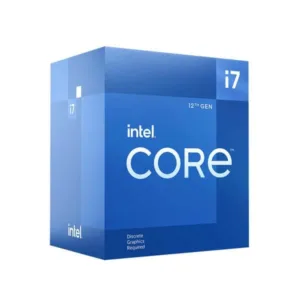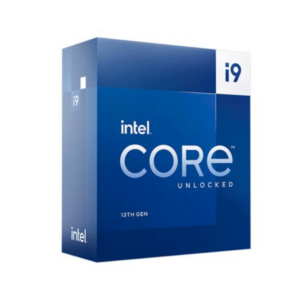Intel Core I5 3rd Generation Desktop Processor
₹1,500
145 no's sold in last 100 days.
Intel Core I5 3rd Generation Desktop Processor Model List
* Any processor from the below list will be delivered based on availability
| Core i5-3570K – 3.4GHz | Core i5-3570 – 3.4GHz | Core i5-3570S – 3.1GHz |
| Core i5-3570T – 2.3GHz | Core i5-3550S – 3.0GHz | Core i5-3475S – 2.9GHz |
| Core i5-3470 – 3.2GHz | Core i5-3470S – 2.9GHz | Core i5-3550 – 3.3GHz |
| Core i5-3470T – 2.8GHz | Core i5-3450 – 3.1GHz | Core i5-3450S – 2.8GHz |
| Core i5-3330 – 3.0GHz | Core i5-3330S – 2.7GHz | Core i5-3350P – 3.1GHz |
| Core i5-3340 – 3.1GHz | Core i5-3340S – 2.8GHz |
Additional information
| Identity | ||||||||||||||||||||||||||||||
|---|---|---|---|---|---|---|---|---|---|---|---|---|---|---|---|---|---|---|---|---|---|---|---|---|---|---|---|---|---|---|
|
||||||||||||||||||||||||||||||
| CPU Specifications | ||||||||||||||||||||||||||||||
|
||||||||||||||||||||||||||||||
| Legal Terms | ||||||||||||||||||||||||||||||
|
||||||||||||||||||||||||||||||
Only logged in customers who have purchased this product may leave a review.
FAQs
What kind of memory does the Intel Core i5 3rd Generation processor support?
The Intel Core i5 3rd Generation processor supports DDR3 memory with speeds ranging from 1066 MHz to 1600 MHz. It typically supports dual-channel memory configurations, allowing for improved performance in memory-intensive applications.
Does the Intel Core i5 3rd Generation processor have integrated graphics
Yes, the Intel Core i5 3rd Generation processors come with integrated Intel HD Graphics. These integrated graphics are suitable for basic tasks such as video playback, web browsing, and light gaming, but for more demanding graphics tasks, a dedicated graphics card is recommended.
Can the Intel Core i5 3rd Generation processor run modern operating systems?
Yes, the Intel Core i5 3rd Generation processor is compatible with modern operating systems, including Windows 10 and Linux distributions. It provides sufficient performance for everyday tasks and basic productivity software.
What are the advantages of using the Intel Core i5 3rd Generation processor?
The advantages of using the Intel Core i5 3rd Generation processor include its balance of performance and affordability, support for advanced technologies like Hyper-Threading and Turbo Boost, and compatibility with a wide range of software and hardware. It is a reliable choice for mid-range computing needs, offering good value for users on a budget.
How does the Intel Core i5 3rd Generation processor compare to newer generations?
While the Intel Core i5 3rd Generation processor offers solid performance, newer generations (such as the 8th, 9th, and 10th Generation) provide improved performance, efficiency, and additional features like support for faster memory and more advanced integrated graphics. However, the 3rd Generation still holds up well for many tasks and is a cost-effective option for those on a budget.
Can the Intel Core i5 3rd Generation processor handle 4K video playback?
The integrated Intel HD Graphics in the 3rd Generation processors can handle 4K video playback, but the performance may vary depending on the specific model and the complexity of the video content. For smoother playback and better performance, a dedicated graphics card is recommended.
What is the lifespan of the Intel Core i5 3rd Generation processor?
The lifespan of the Intel Core i5 3rd Generation processor is generally long, with many users reporting reliable performance over several years. Proper cooling and maintenance can further extend its lifespan, making it a durable choice for long-term use.
Can the Intel Core i5 3rd Generation processor be used for machine learning tasks?
While the Intel Core i5 3rd Generation processor can handle basic machine learning tasks, it may not be the best choice for more demanding workloads. For machine learning, especially with large datasets and complex models, a processor with more cores and higher clock speeds, or a dedicated GPU, is recommended.
What are the key features of the Intel Core i5 3rd Generation processor?
The Intel Core i5 3rd Generation processor features dual-core or quad-core architecture, support for DDR3 memory, integrated graphics, and a range of advanced technologies such as Turbo Boost and Hyper-Threading. It is designed for mid-range performance, suitable for multitasking, gaming, and general computing tasks. it remains a popular option for budget-conscious users.
What is the lifespan of the Intel Core i5 3rd Generation processor?
The lifespan of the Intel Core i5 3rd Generation processor is generally long, with many users reporting reliable performance over several years. Proper cooling and maintenance can further extend its lifespan, making it a durable choice for long-term use.
RECOMMENDED PSU TABLE
Please refer to the recommended PSU table as below. It indicates clearly on the power by GPUs and corresponding CPUs. We hope this information helps you choose the right power supply units based on your components.
NVIDIA GPU 4000 Series
| GPU | Intel i5 / Ryzen 5 | Intel i7 / Ryzen7 | Intel i9 / Ryzen9 |
|---|---|---|---|
| RTX 4090 | 850W | 1000W | 1000W |
| RTX 4080 16G | 750W | 750W | 850W |
| RTX 4070 Ti | 650W | 750W | 750W |
| RTX 4070 | 550W | 650W | 650W |
| RTX 4060 Ti | 550W | 550W | 650W |
| RTX 4060 | 550W | 550W | 550W |
PSU Recommendation for all NVIDIA GPU’s
AMD GPU 7000 Series
| GPU | Intel i5 / Ryzen 5 | Intel i7 / Ryzen7 | Intel i9 / Ryzen9 |
|---|---|---|---|
| RX 7900 XTX | 850W | 850W | 1000W |
| RX 7900 XT | 750W | 750W | 850W |
| RX 7600 | 550W | 550W | 650W |




















Reviews
There are no reviews yet